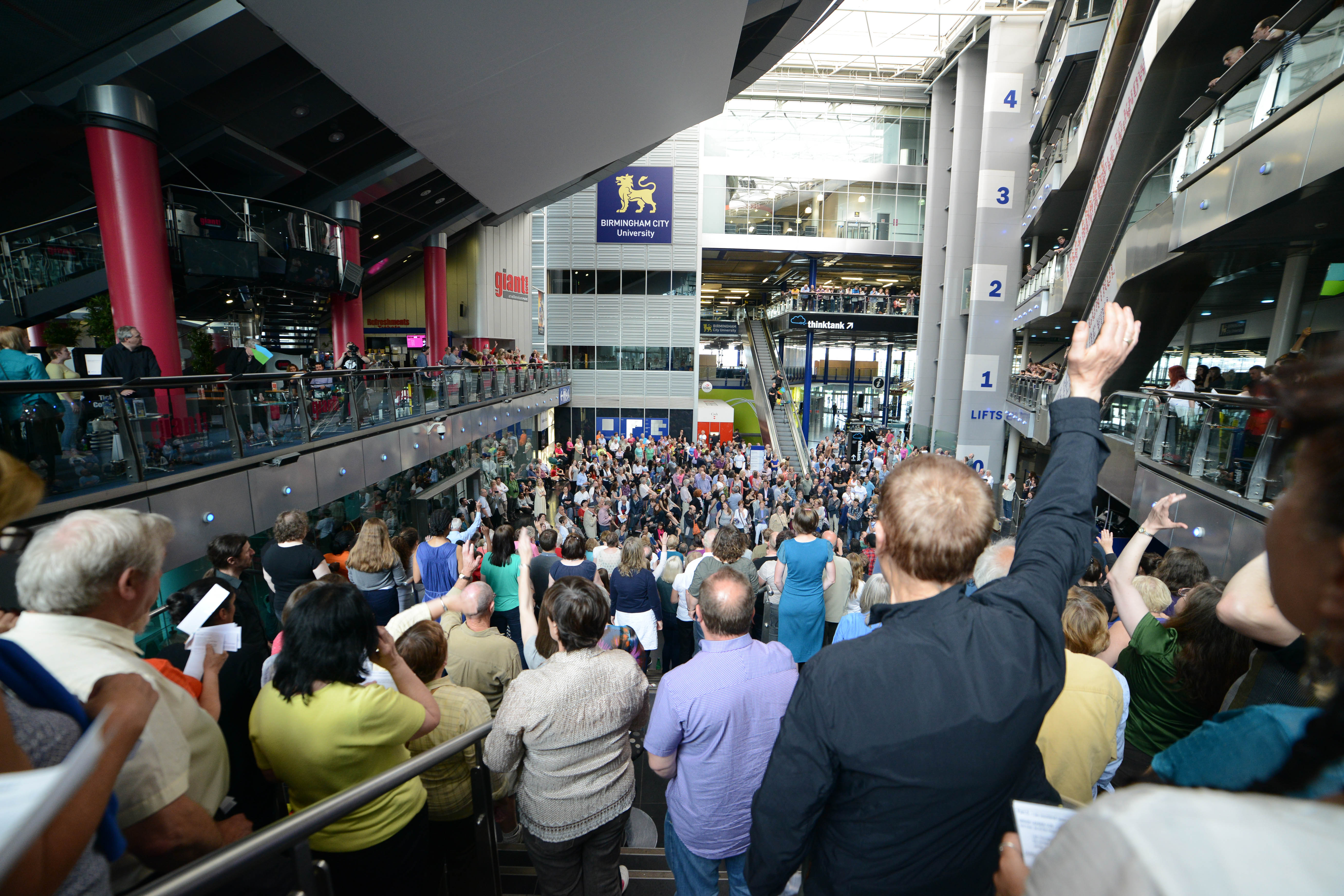Stroll through Millennium Park this Sunday afternoon and you might see and hear something unusual: big groups of people scattered across the plaza by the Bean, singing, clapping, shouting, and murmuring.
These 1,000 people—yes, one thousand, of them—are participating in a large-scale choral piece, written by Pulitzer Prize-winning composer David Lang, called Crowd Out.
Chicago's performance will be its American premiere at 3 p.m. this Sunday by the Bean. (The world debut took place a few years ago in the UK.) And though many participants come from choral groups and church choirs, the piece is fundamentally democratic: Anybody, regardless of vocal training or experience, was able to sign up to take part in the performance.
“We have a combination of people who train every single day, and people who love singing, but they’re not in a group, or haven’t sung since high school,” says Donald Nally, conductor of the performance. “It requires energy and commitment, and a certain level of vulnerability in terms of taking risks, and not being squeamish, and allowing yourself to be an emotional creature.”
The text for the piece is the result of Lang typing in “When I am in a crowd” to a search engine, and then compiling the suggested phrases. The result is a varied collection of emotions and responses, from panic to tranquility: “I feel like rushing into tears… I draw deep breaths… I feel more confident and calm… I lose control.” Some parts are sung, some are shouted. (One part just has the participants yelling, “Ha!”)
“It sets up this really interesting tension between what it means to be a part of or build a community, and what it means to be an individual,” says Alison Cuddy, artistic director at Chicago Humanities Festival, a co-organizer. “How do you maintain those two things? It’s the tension between individuality and community that’s at the heart of what it means to be a citizen.”
The 1,000-person chorus is divided into four “strands,” each one assigned a color, who sing different parts throughout the piece before uniting at the very end. Each of these strands will be divided into smaller groups, mixed with other strands, and scattered, somewhat randomly, across the plaza by the Bean.
The aim of Crowd Out is break down the divide between performer and audience, like a flash mob of sorts; they're hoping passers-by might join in by sharing someone's lyric sheet or just following along. “It would be obvious that there’s some guy yelling a word, and everybody in that area is yelling back at him. You’re not that far removed from the activity,” Nally says. (He recounts a memorable early experiment at the pond in Lincoln Park, when visitors to the zoo, impromptu, joined his graduate students in their rendition.)
Nally will stand on a platform toward the middle of the plaza, where most people will be able to see him, aided by assistants carrying giant, color-coded cue cards. He’s also depending on individual choral leaders, who'll guide their groups along, or lead call-and-response sections of the piece.
“There’s not a lot of conducting that goes on in it. There’s a whole lot of guiding. I am the person who signals that a new cell is going to start, and that cell is going to move through the crowd,” says Nally. “It feels like you’re in an ever-growing community as you go through the process of the piece assembling.”
And as co-conductor Tim Munro notes, the piece is largely “bulletproof.” While there are instructions for how each strand ought to sing, there’s also a sense that a degree of disorder is permissible and even expected.
Organizers hope the grand project will spur more arts programs across the city; to this end, they’ve ensured that the chorus contains members from each of the fifty wards.
“There are certain neighborhoods in Chicago that have a wealth of cultural spaces: theaters, galleries, arts and cultural organizations. There are others, where you’re fortunate if there are one or two that are situated there within the neighborhood. There are students today in CPS, in schools in far west or south side, who’ve never even been to the lake or Museum Campus. If we can use this kind of experience to address some of those disparities, that would be a good thing,” says Paul Durica, director of programs at the Illinois Humanities Council, another organizer.
He adds that during the 23rd Ward rehearsal at the Valley Forge Fieldhouse, a member of the Garfield Ridge Chamber of Commerce showed up, and mentioned that she was trying to create pop-up spaces in a string of empty storefronts in the neighborhood. “Well, we know other artists or art collectives who specialize in doing pop-up spaces. And we can put her in touch with them,” Durica says. “Through this project, we can start doing those kinds of connections. The goal is that we’ll revisit them and have those relationships in place.”




